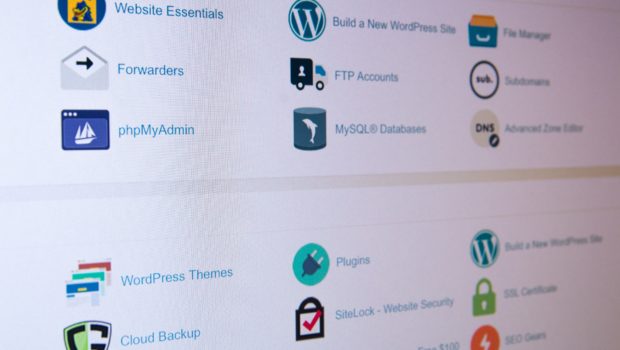Blogging For Your Business: It’s Not as Difficult as You Think
There used to be a time when blogging was something that was done by people who were sharing their everyday experiences with people online. You’d have bloggers who were writing about their workouts in the gym, and others who would talk about the places that they have travelled to around the world.
However, over the years, the concept of blogging has changed, and it’s now something that virtually all companies do, with blog sections being an integral part in all websites.
However, you won’t find the blogs filled with personal experiences of the vice president’s recent fishing trip to Alaska, or the general manager’s recent engagement party. Nowadays, blogs are a way of sharing news with people interested in a specific industry or market.
Starting your Own Blog
If you have a website for your business, whether you are a graphic designer, or a wedding planner, it’s vital that you have a blog added to your website. As well as using it to post articles about new happenings in your niche, it’s also a great way to let visitors to your site know that you are keeping it updated, and are active online.
The most popular blogging platform is WordPress, which is the world’s most popular CMS (content management system). WordPress currently powers more than 30% of all websites online, and has developed over the past decade from being a basic blogging platform to one that powers huge websites and businesses all around the world.
There are of course other blogging tools you can use, but WordPress is the most popular, and with the huge choice of beautiful looking themes and great plugins that can enhance your site, it’s a no-brainer when it comes to choosing a blogging platform.
What type of Website do you Currently Have?
If your current website is already running on WordPress then you are in luck. Adding a blog section to the site is relatively easy and something you can get done in just a few minutes. Here are some of the blogging tips that will help you set up and grow your blog.
If your website is built with another method, and you want to use WordPress for your blog, then you have a couple of options. The first is to install WordPress as a sub-domain of your website – something like blog.mysite.com. The second is to install WordPress inside a new folder on your website – something such as mysite.com/blog. Both methods work fine, so it’s really a case of personal preference with which you go with.
Hosting your Blog
If you already have a website up and running, then you should be able to have your WordPress blog added with no problems at all. Most web hosts offer the ability to install and run a WordPress site with your hosting account. The one thing to check is if there are going to be enough server resources for you to use. If you are on a shared hosting account then your disc space and data transfer are probably limited. It might be worth checking with your web host just to make sure you won’t run into any problems.
If you are looking for a new web host, then you should take a bit of time and visit fortunelords.com, which is packed full of reviews and comparisons of web hosts all over the world. They can help you find the best host for your website by comparing the features of different hosting options.
Deciding on your Blog Theme
The great thing with WordPress is that there are literally thousands of free themes that you can use for your blog. There are also a number of companies that sell premium themes which have a lot more functionality and options, but to start with, it’s probably best sticking with a free theme while you get themes set up.
The theme you choose should be a reflection of your type of business. There’s no point in using a theme that is full of pretty images of kittens if you are running a law firm. You’ll want your business blog to have a professional appearance and style about it, so when searching for a suitable theme, search using some of the keywords of your business such as lawyer, solicitor or law.
Only Install Necessary Plugins
Along with the huge number of themes available for WordPress, there are also hundreds of different plugins that you can also install. These include everything from simply image galleries, through to plugins that will help with your SEO (search engine optimization).
One thing to be careful with is the amount of plugins that you start installing. Each additional plugin that you add to your site will add to the time needed for your pages to load. A common mistake that a lot of people make is to install dozens of plugins which they don’t really need.
Some of the most essential plugins will include ones for a contact form, SEO, site security, caching (which helps with the speed of your website) and maybe one for sharing your content on social media. Unless you need to have your blog doing something very specific, then these types of plugins will be all you’ll need.
Start writing quality content
Now that you’ve got your blog up and running, you need to add the missing ingredient – content. The whole purpose of a blog on your business site is to share news about your industry, so if you are a travel agency, then you can write about some of the upcoming destinations that are going to be popular next year.
There is no limit to what you can write about on your blog, but you will want to make sure that the content is something that will engage your visitors, and not simply bore them to death with pointless waffle. Also remember to delete your negative content that affects engagement rates.
Images are also vital to successful blog posts, so make sure you add a few of them. No one likes to have a page full of text in front of them. Break it down by including lots of images. If you don’t have your own wide selection of images to use, then there are a number of websites such as Pixabay, where you can download license free images to use on your websites.
Running a blog for your business website is not a difficult thing to do. It is a great way to stay connected with your clients and keep them updated with what is happening in the industry. It’s also a powerful way to share news about your own new products or services, and create interest in your business.
Photo by Stephen Phillips – Hostreviews.co.uk on Unsplash
















